Bearded Dragon Care Sheet Introduction:
Welcome to our Bearded Dragon Care Sheet. We want to provide a page where you could go to find out as much information as possible on keeping bearded dragons, and this will become your go to resource!
This Bearded Dragon Care Sheet will cover everything you need on raising healthy and happy bearded dragon. We will take you down each step of bearded dragon husbandry. From setting up the enclosure to organizing a consistent feeding schedule.
If you are new to bearded dragons and are interested in owning one. Itc is very important to remember that you should read every bit of information pertaining to their husbandry before bringing one home.
Bearded Dragon Care Sheet:
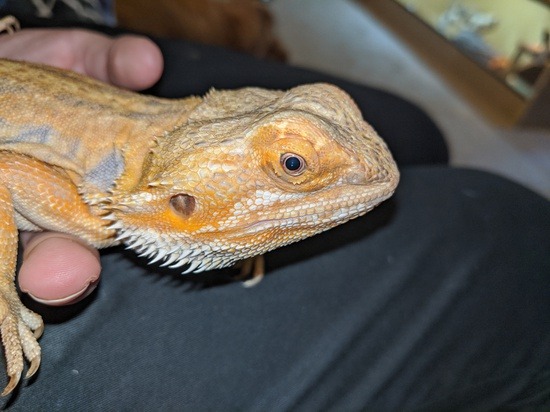
You will need to have everything that is required for keeping bearded dragons (and have it all set-up and operational) before acquiring your new pet.
Bearded dragons come from the dry, arid regions of Australia. They typically eat native insects and vegetation and receive water from little rainfall, dew, and what comes from plants, such as cactus. It is important to replicate their native environment when kept in captivity. That’s why the proper housing, lighting, heating, and diet parameters must be met in order to ensure they stay happy and healthy.
So let’s get started by first discussing the housing requirements for a bearded dragon!
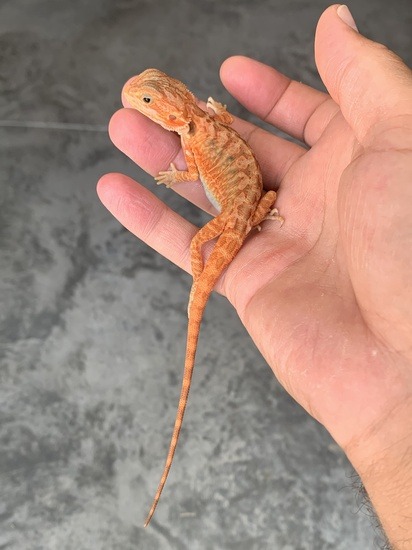
Bearded Dragon Care Sheet:
Housing Requirements for a Bearded Dragon:
When we say housing requirements what we are referring to is the container your bearded dragon will live in. There are different terminologies, such as terrarium, enclosure, housing, or tank.
Whatever word you use it all pretty much means the bearded dragon’s home.
The first decisions you should make before acquiring a bearded dragon is what you will use for housing.
Although there are a wide range of great options and bearded dragon are fairly easy to accommodate there are some factors you should take into account when shopping for its home.
The enclosure will probably be one of the most expensive items you will need for keeping bearded dragons, so make sure you give it a good deal of thought and research before purchasing.
Here are a few things to consider when selecting a suitable enclosure for your bearded dragon.
Bearded Dragon Care Sheet:
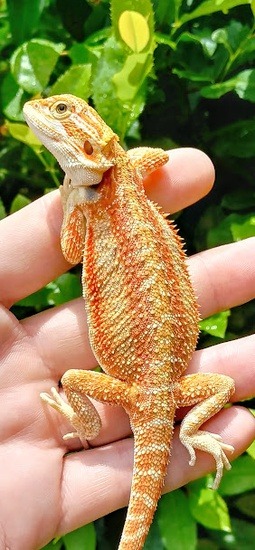
Size:
Today’s pet market has a wide range of choices for housing a bearded dragon, and there are some great options available.
Bearded dragons need as much floor space as possible, so an enclosure with plenty of floor space is optimal.
If using an aquarium or terrarium, we recommend one at least 125-gallons. This aquarium measures 72 inches long, 18 inches wide, and 16 inches tall. This will give an adult bearded dragon plenty of space.
We do not recommend an enclosure smaller than 55-gallons for an adult.
A good rule of thumb is the length of the enclosure should be around three times the length of the bearded dragon.
Ideally, you will want to start with an enclosure large enough for an adult, but if money is tight it is okay to start with a smaller enclosure with a baby bearded dragon. Just keep in mind that you will need to purchase a larger enclosure as it matures.
If you are a crafty, handyman (or know one) you could also build a quality enclosure for your bearded dragon. This has many advantages over purchasing an enclosure:
- Choose your own design!
- Select your own materials (which we will discuss shortly)
- Customize the enclosure to suit for your needs and the needs of your animal.
These are just a couple examples of the advantages of building a custom enclosure. If you are just starting out with bearded dragons, you may want to start with an inexpensive terrarium and work on building a custom enclosure as you gain more experience. It’s completely up to you!
Bearded Dragon Care Sheet:
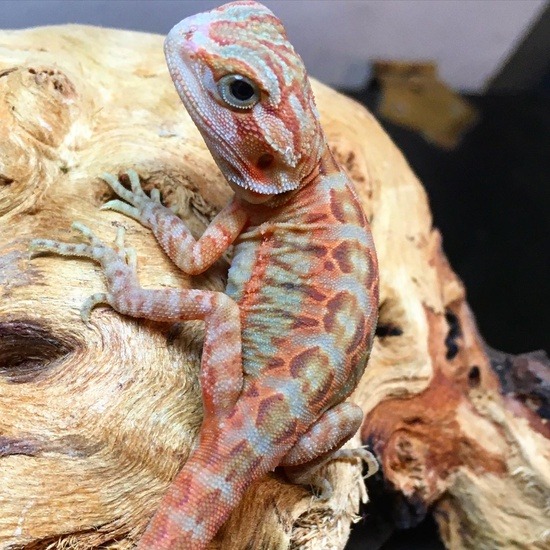
Materials:
Most commercial enclosures available today are made of aquarium-grade glass. This tends to be the most preferred housing material. It looks good, it is easy to clean and maintain, and it is relatively inexpensive.
Another material used for housing is acrylic – a strong, lightweight plastic. Acrylic’s biggest advantage is that it is much lighter than glass. There are some disadvantages to acrylic, such as cost and it is very easy to scratch.
Since bearded dragons are from a dry climate and do not require much humidity, enclosures can be built from wood, or even poly resin materials like fiberglass. Just make sure what ever you use is safe for pets.
We recommend using an all-glass enclosure, or building a custom enclosure to suit your needs. Most bearded dragon owners tend to stay away from acrylic. Bearded dragons are known to scratch on the sides of the enclosures which will severely scratch acrylic. After a couple years of this the enclosure will be so scratched that it will become hazy and blurred at which point it will need to be replaced.
Security:
Another thing to consider when selecting the proper housing is the security of the enclosure.
You do not want your awesome new pet to have the ability to get out of its enclosure. More importantly, if you have children, cats or dogs, you do not want them to have the ability to gain access to your bearded dragon.
Using a screen top will also prevent your pet from coming in contact with the hot basking and fluorescent bulbs needed for warmth and UV exposure. This will greatly reduce the chance of your bearded dragon receiving accidental burns.
Bearded Dragon Care Sheet:
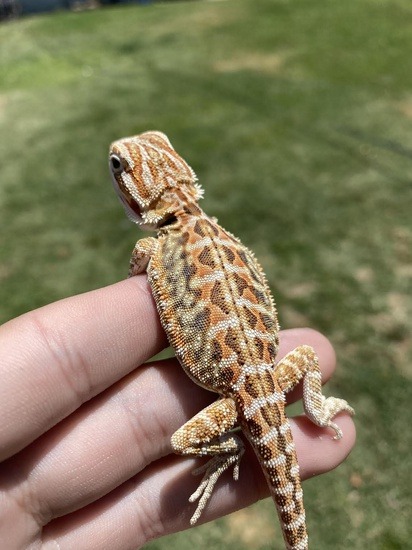
It is recommended to use a screen top on the enclosure to enhance the security of the enclosure. A screen top will also help increase needed air flow within the enclosure. Some commercial enclosures come with sliding (or swinging) glass doors on the front which makes feeding and cleaning much easier.
No matter which enclosure you decide to use, keep some security measures in mind!
Next, we will go over the lighting requirements of bearded dragons.
Lighting Requirements for a Bearded Dragon:
We know that bearded dragons come from the hot desert areas of the Australian outback. Because of this, bearded dragons receive UVA and UVB radiation naturally from the sun. This radiation is essential for the health of the bearded dragon.
Since bearded dragons need this radiation from the sun, we must replicate it when bearded dragon are kept captive indoors. The best way to reproduce these rays is by specialized, full-spectrum lighting supplied by fluorescent and mercury vapor light bulbs. These full-spectrum bulbs are readily available at most pets stores.
Bearded Dragon Care Sheet:
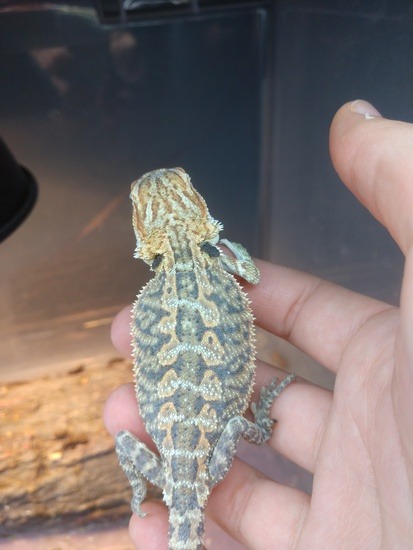
It is important that your pet receives at least 10 to 12 hours of exposure to the lighting each day. Failure to provide UVA and UVB rays can lead to many health issues including mental problems, loss of appetite and metabolic bone disease.
Bearded Dragon Care Sheet:

Make sure the bulb you choose offers at least five to seven percent UVA and UVB radiation.
UVA radiation helps your bearded dragon to remain healthy, stimulated, and maintain a healthy appetite
UVB radiation gives the bearded dragon the ability to metabolize vitamin D3 and calcium
Here we will go over each type of bulb and how to select the best bulbs for your specific needs.
Bearded Dragon Care Sheet:

Fluorescent Bulbs:
The most common full-spectrum bulbs used by bearded dragon enthusiasts are fluorescent tube bulbs. You can’t use just any ordinary fluorescent bulb, it has to be one manufactured especially for desert-dwelling reptiles.
These bulbs come in lengths ranging from 15 inches to 48 inches in length. The length you need will depend on the length of the enclosure. For instance, if the enclosure is 60 inches long the shortest bulb you should use is 48 inches in length.
You should use a fluorescent bulb that is at least 80% the length of the enclosure.
If the enclosure is greater than 60 inches long then you will need to use two or more bulbs to supply enough UVA and UVB radiation over the length of the enclosure.
Fluorescent tube bulbs need to be housed in a hood or ballast that is specifically designed for use with reptile bulbs.
These bulbs also tend to lose their intensity over time and need to be replaced about every six months in order to provide optimum radiation.
Bearded Dragon Care Sheet:

Compact Fluorescent Bulbs:
In recent years compact fluorescent bulbs have gained popularity in the reptile husbandry world. These are the “curly” or “twisty” looking bulbs.These bulbs offer good radiation benefits while consuming less power to operate.
There has been some debate within the reptile- keeping community over the safety of these bulbs. There have been instances where the bulb has caused some reptiles to suffer from burned eyes leading to cases of blindness in the pet.
As we mentioned, this has been highly debated. Some users have experienced no detrimental effects from the bulbs, while others swear against their use. We recommend using the long fluorescent tube bulbs over the compact fluorescent until further testing and effects are supplied by manufacturers.
Mercury Vapor Bulbs:
Mercury Vapor bulbs are used by many bearded dragon owners and breeders as one of the most preferred lighting options. These bulbs provide adequate amounts of both UVA and UVB rays and also provide heat (which we’ll cover in the next section).
Mercury Vapor bulbs are more costly than fluorescent tubes, but tend to last much longer.
The downside to Mercury Vapor is they provide heat and UVB radiation in a relatively small area directly under the bulb. Fluorescent tubes provide radiation over a longer area, but provide little heat.
So, if you use a Mercury Vapor bulb in the basking area the bearded dragon will receive adequate
radiation and heat while basking, but if it moves to another area of the enclosure it will not receive radiation until it moves back under the Mercury Vapor bulb.
If you use a fluorescent tube that covers the entire length of the enclosure the bearded dragon will receive adequate radiation throughout the entire enclosure.
Bearded Dragon Care Sheet:

Proper Placement of Lighting Bulbs:
Once you select the best lighting bulb for your enclosure, it is time to determine the placement of the bulb. The placement is critical because if you place the bulb too far away the bearded dragon may not receive enough radiation or heat.
Never place your lighting bulbs above glass. Glass will block crucial UV radiation causing your bearded dragon to receive inadequate exposure.
Fluorescent tube bulbs should be mounted in a hood or ballast that is designed for reptile use, and placed no more than 12 inches from the floor of the enclosure. Placing these bulbs farther away than 12 inches greatly reduces the effectiveness of the bulb. If the height of your terrarium is greater than 12 inches you may need to add extra substrate to decrease the height.
Mercury Vapor bulbs should be placed no higher than 20 inches from the floor of the terrarium for full effectiveness. Generally Mercury Vapor bulbs are placed at one end of the enclosure to replicate a basking area.
Always read and follow the bulb manufacturer’s recommendations for proper bulb placement for your specific model and brand of bulb
Bearded Dragon Care Sheet:


Light Cycles:
Which ever lighting you decide to use it is important to keep them on an appropriate light cycle each day. Just as our lives are generally dictated by the rising and setting of the sun, the same is true for bearded dragons. It is very important to replicate day and night within the enclosure.
During the summer months you should provide your bearded dragon with a minimum of 14 – 16 hours of daytime light and UV exposure and 8 – 10 hours of nighttime exposure
During the winter months the light cycle should be decreased to 10 – 12 hours of daytime light and UV exposure and 12 – 14 hours of nighttime exposure
The exact amounts of daytime light and nighttime exposure can vary as long as the bearded dragon receives a minimum of 10 – 12 hours of UV exposure per day.
The best practice for accomplishing the correct light cycles is by plugging the daytime and nighttime lighting into a timer that switches the lights off and on at the specified times throughout the day.
Now that you have a general feel for the lighting requirements of bearded dragons, let’s discuss the topic of heating your bearded dragon’s enclosure.
Heating Requirements for a Bearded Dragon:
Along with providing your bearded dragon with proper lighting, you must replicate the heat of the arid desert environment and supply adequate heat.
This is accomplished by using incandescent bulbs, heat lamps, and other devices.
Just like the fluorescent bulbs mentioned in the previous section, you need to use heat lamps that are specifically designed for reptiles.
Regular household bulbs do not provide enough heat to keep a bearded dragon healthy and comfortable.
Here are the proper temperatures for each stage of a bearded dragon’s growth.
Bearded Dragon Care Sheet:
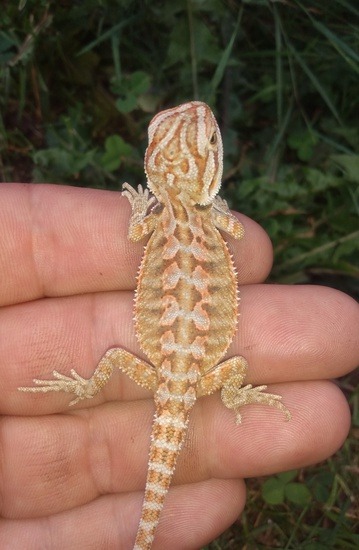
Bearded Dragon Care Sheet:
Temperatures for a Baby Bearded Dragon:
The ambient temperatures within the enclosure for a baby bearded dragon (hatchling – 5 months old) should stay at least 80°F (26°C) to 85°F (29°C).
A basking area should be established with temperatures ranging between 95°F (35°C) to 110°F (43°C). On the opposite side of the enclosure, the temperatures should be slightly cooler and range between 80°F (26°C) to 90°F (32°C).
Temperatures for a Juvenile Bearded Dragon:
Juvenile bearded dragons (5 months old – 18 months old) require temperatures slightly cooler, ranging from 95°F (35°C) to 105°F (40°C) in the basking area. The cooler region should be kept around 80°F (26°C) to 90°F (32°C).
Temperatures for Adult Bearded Dragon:
Adult bearded dragons (over 18 months old) can have slightly cooler basking areas with temperatures ranging between 90°F (32°C) to 93°F (33°C). The cooler region of the enclosure can still be kept at 80°F (26°C) to 90°F (32°C), just as with babies and juveniles.
Night time Temperatures:
The nighttime temperatures should drop to 72°F (32°C) to 80°F (26°C) within the enclosure. If the temperatures drop below this after turning the heat and light sources off at night, you may need to use a heating device that does not emit light to supplement heat.
The bright light from a daytime bulb will disturb the bearded dragon’s sleeping patterns. We will discuss nighttime bulbs and heating devices further below.
Bearded Dragon Care Sheet:
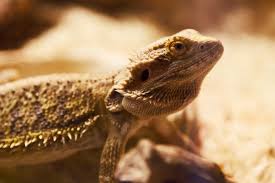
Thermometers:
High quality thermometers should be used in the basking area and in the cooler zones to constantly monitor temperature levels.
You should also provide a good hygrometer within the terrarium to monitor humidity levels. You want to keep the humidity levels around 35% – 40%, but never over 55% inside the terrarium.
There are many very good digital thermometers available for getting fast, accurate readings.
Never guess what the temperatures are – make sure to use thermometers on opposite ends of the enclosure!
Creating a Temperature Gradient:
There should be a consistent temperature gradient across the entire terrarium. The hottest point should be directly under the basking element and the coolest area on the opposite end of the enclosure. The temperature should be the warmest in the basking zones while cooling gradually into the coolest zone.
Bearded dragons regulate their own body heat. They know when they need to bask, and if they begin to get too warm, will move away from the basking spot into a cooler area to cool down. It is very important to provide them with the proper gradient for them to regulate body temperature.
Now, let’s go over the best devices for heating your enclosure.
Bearded Dragon Care Sheet:
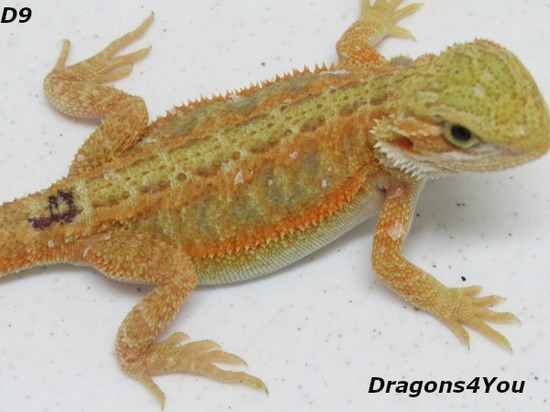
Heat Basking Lamps:
Heat basking lamps are generally incandescent bulbs designed to provide radiant heat for your bearded dragon. They can range in size from 10 watts to 150 watts and come in different variations. For bearded dragons it is recommended to use bulbs designed for basking, such as the Exo Terra Day Glo Basking Tight Beam Bulb, or the Exo Terra Intense Basking Spot Bulb, if you plan to use an incandescent style bulb.
There is also the Exo Terra Halogen Basking Spot Bulb which has a much longer usage life over incandescent bulbs.
These bulbs are generally mounted in a dome-style fixture that includes a high heat ceramic socket.
Dome fixtures can usually sit down on top of a screen top, or mounted onto a lamp stand that allows it to safely hang over the enclosure top.
Mercury Vapor Bulbs:
As mentioned in the Lighting section, Mercury Vapor bulbs provide UVA/ UVB radiation and is a good heat source. This is a viable option in order to reduce the amount of bulbs needed in order to provide both basking heat and ultraviolet radiation.
It is recommend that if you do decide to use a Mercury Vapor bulb that it be used in unison with a fluorescent style bulb to spread the ultraviolet radiation across the entire enclosure.
Bearded Dragon Care Sheet:


Ceramic Heat Emitters:
Ceramic heat emitters give off radiant heat, but do not provide any visible
light. They are mounted in a ceramic light fixture just like a basking or Mercury Vapor bulb.
These devices are generally used as supplement heat, or for nighttime heat.
Ceramic heat emitters are ideal for nighttime use due to the lack of visible light. The most common wattage are found in either 60 watts or 100 watts.


Nighttime Bulbs:
As mentioned previously, nighttime bulbs are used to simulate nighttime. These are the times when bearded dragons rest, much like humans do. These bulbs also support some nocturnal activity.
Nighttime bulbs are usually incandescent bulbs with lower wattage used to supply some heat while providing very little light. They are usually found in black, which produces a very dim purplish glow, or red which gives a dim red glow in the enclosure that bearded dragons can not detect.
Ceramic heat emitters and under tank heat pads can also be used to supply small amounts of heat without producing disturbing light.


Bearded Dragon Care Sheet:
Under tank Heat Pads:
Under tank Heat Pads (sometimes referred to as Substrate Heaters) are flat pads that stick to the bottom, or side, of a terrarium and give off a low, gradient heat. These are generally used to provide supplemental heat from below, or to warm the substrate.


Under tank heaters should be used on glass enclosures and are not recommended for wood or other materials that can catch fire!
Under tank heaters are a good option to use to supplement heat and warm the substrate during cold winter months.
Heat Rocks:
Heat rocks are heating elements that are shaped to resemble realistic rocks and placed inside the terrarium to provide heat. Although they are still widely sold in the pet market, they are not recommended for use. Next, let’s jump on the topic of substrate and terrarium decor items.
Heat rocks can easily overheat and burn the bearded dragon’s soft belly and lower sides. It is highly recommended to avoid using heat rocks at all costs!
Substrate and Terrarium Decor:
Substrate is generally the term used to describe the flooring used in the enclosure. You don’t want your bearded dragon to be walking, laying, and possibly napping on a bare glass floor, so a substrate is needed to make the home a bit more comfortable.
Bearded Dragon Care Sheet:
There are many different types of substrate you can use, but some are a better choice than others. Let’s go over a few types of substrate to help you decide which one best fits your needs.
Bearded Dragon Care Sheet:

Calcium Sands and Playground Sands:
One of the most popular substrates used for bearded dragons is calcium- based sands and playground sand. Using these sands gives the terrarium a real desert look, and is typically easy to maintain.
Calcium-based sand is produced by most of the big name reptile supply manufacturers, and can come in many different colors. They are made from a calcium substance and is very similar to the look and feel of real sand. This substrate helps to promote the natural digging instincts of bearded dragons and helps to retain some heat within the enclosure.
Playground sand is also another option as it is fairly inexpensive and easy to acquire. It can be found at most home improvement stores, or some pet stores.
If playground sand is used, it should be baked in the oven at 350°F for about 15 minutes to kill off any potential bad germs or bacteria – just to be on the safe side. You don’t want to introduce any bad critters into your bearded dragon’s home.
Bearded Dragon Care Sheet:


If this substrate is used it should be replaced once a month with spot cleaning performed as any messes arise.
There is a huge drawback to using these substrates – they can lead to impaction issues, especially in baby and juvenile bearded dragons. The small particles of the substrate can be easily swallowed by the bearded dragon while snatching up insects.
Over time the grains of the substrate can build up in the digestive system causing a blockage, this is called impaction. Impaction will most certainly lead to death if left untreated. The bad thing is you don’t usually know your bearded dragon is suffering from impaction until it’s too late.
You can use a separate empty enclosure used just for feeding and to temporarily house your bearded dragon while cleaning the permanent home. At feeding time, take your bearded dragon out of the terrarium and place him in the empty terrarium. Have food items ready to offer and feed him away from the loose substrate. Once he is finished eating, place him back in the permanent terrarium.
This can drastically cut down on the dangers of impaction, but any time the bearded dragon is in contact with loose particle substrates the impaction chances are present.
We do NOT recommend using loose particle substrates (like Calci- Sand or ground walnut shells) for baby or juvenile bearded dragons. Newspaper, reptile cage carpet, or ceramic tiles are a safer solution.
Reptile Cage Carpet:
Reptile Cage Carpet is a plastic carpet specifically designed for use in reptile terrariums. It resembles the green or brown indoor/outdoor carpet used to resemble grass.
This is a low-cost/ low-maintenance option that works really well. It is very easy to clean, easy to replace, and fairly inexpensive. It may not be the most attractive substrate option, but it is one of the safest.
There is very little risk of impaction by using this substrate as there are no small loose particles the bearded dragon could swallow.
Reptile cage carpet is easy to remove and clean. The carpet should be removed and cleaned with warm water and a very mild soap at least once a week.
Make sure to rinse the carpet thoroughly and allowed to dry completely before adding back to the terrarium. Spot clean any messes as soon as they are discovered. You should replace the carpet at least once every 3 months or as needed.
Do NOT use indoor/outdoor carpet! Instead opt for the cage carpet/ terrarium liner made specifically for reptiles. Indoor/outdoor carpet is generally made with woven pieces of material that can cause the bearded dragon to get tangled into. This can result in painful injuries to the feet and toes.
Bearded Dragon Care Sheet:


Newspaper:
This is another viable option for substrate. Newspaper is often readily available in the home, and makes for a simple solution. Just place three or four layers of newspaper, covering the entire floor area.
If newspaper is used, it should be replaced at least every other day. Clean up any messes as soon as they are discovered.
Newspaper is certainly not attractive, but is a very economical choice.
Basking Perches:
Your bearded dragon will definitely need a sturdy basking perch. They love to have something to climb up on while basking.
One of the most common basking perches used is simply a piece of driftwood, or branch of some kind. Driftwood pieces can be easily found at most pet stores and is fairly inexpensive.
Large rocks and stones are another great looking and functional basking perch. These can also be easily found in pet stores, or some garden centers.
What ever you decide to use make sure you sterilize it before adding to the terrarium. You can place rocks and stones in the oven at 350°F for about 15 minutes. Wood items can be placed in a large pot of water and boiled to remove any harmful bacteria.
Bearded Dragon Care Sheet:
Also, make sure the basking perch is large enough for your bearded dragon to lay on comfortably. Place the basking perch in a way to prevent it from accidentally falling over. You don’t want it to topple over causing a possible injury to your bearded dragon.
Hiding Huts:
In order for your bearded dragon to feel safe and secure you should supply a place for him to hide. There are many different styles available at pet stores which will provide a great spot to hide.
There are rock caves, half-round tree bark pieces, or you can get creative and make a hide out yourself. Just make sure it is large enough for your bearded dragon to fit into, and the entrance is easy to access.
Food and Water Bowls:
It goes without saying that feeding your bearded dragon will be difficult without a food bowl. There are many different food bowl options to choose from in the market today. Most pet stores will offer a good selection of attractive food bowls.
Make sure to locate food bowls in an area that’s easy for the bearded dragon to find, and away from any heat sources. Basking bulbs can quickly spoil any vegetables and fruit offered if they are placed near the basking area.
If you have a very small baby bearded dragon, use a shallow bowl that makes it easy for him to see and reach.
Although bearded dragons do not typically drink from water bowls (they can not detect water that is standing still) a water bowl with fresh, de-chlorinated water should still be supplied.
Make sure the depth of the water bowl is not so deep that your bearded dragon could drown. A shallow bowl, less than an inch in depth, should work perfectly.
Bearded Dragon Care Sheet:

Food and water bowls should be emptied and cleaned each day. You don’t want to leave spoiling food left in the enclosure overnight. Water should be replaced with fresh, un-chlorinated water each day as well.
Backgrounds:
Offering a home to your bearded dragon that makes him feel safe and secure is very important for their mental health. We mentioned one way of doing that – providing a suitable hiding location. You should also provide a background to the back of the enclosure to add some security.
There are many options of backgrounds available. Some new editions are backgrounds made from molded styrofoam and plastic formed to resemble rock walls and other scenery. These are inexpensive, lightweight, and most important, very attractive.
Even simple aquarium backgrounds work well to provide security.
You can let your creative juices flow and even create your own great looking background. Just make sure the materials you use are non-toxic and safe for use. You also do not want to use anything the bearded dragon could possibly eat or swallow.
If there is a lot of foot traffic around your bearded dragon’s enclosure, you may need to also cover the sides so only the front is viewable.
Providing a background gives the bearded dragon a sense of security while also creating a more ascetically-pleasing terrarium.


Decorations:
Of course the possibilities of decorating your bearded dragon terrarium are virtually endless. You can go as far as your imagination can take you.
Rocks and pieces of driftwood are very common decorations. There are many fake plants you can add, like cactus, desert brush, and others.
Bearded Dragon Care Sheet:
It is best to use fake plants over adding live plants. Since bearded dragons are omnivorous they do like vegetation and may munch on any live plants. Any safe live plant you add will more than likely be devoured and killed within a few weeks. If you do choose to add live plants, here are a few that are known to be safe:
- Juniper:
- Mint:
- Cilantro:
- Parsley:
- Jade::
- Ponytail Palm:
If live plants are used it is very important to make sure you know it is safe. You do not want to accidentally poison your bearded dragon causing illness or death
Designing the bearded dragon habitat can be a lot of fun. Perform a search on Google to find some very interesting terrarium designs to find inspiration!
Bearded Dragon Care Sheet:

Bearded Dragon Diet & Nutrition:
One of the most important things you must provide your bearded dragon is a nutritious, varied diet for best health results. Although providing an ample diet is not very difficult there are many things you should do and many you shouldn’t.
Bearded dragons should be offered fresh food and water a minimum of twice per day, but generally are fed as many as four to five times a day. Feeding frequency can vary depending on age and time of year. We will get to that in just a bit.
Some feeder insects tend to be better choices than others, while some should be avoided altogether. Some plant matter is highly recommended to offer, while some should be avoided.
Also, how much insect food or plant matter food you offer can vary greatly depending on the age and overall health of the bearded dragon.
Bearded Dragon Care Sheet:

So, let’s jump in and talk about these subjects, along with others, pertaining to diet and nutrition requirements of bearded dragons.
Diet Requirements of Bearded Dragons:
Bearded dragons are omnivorous, which means they eat both meat (primarily insects) and plant matter. In the wild, bearded dragons consume insects, plants, and the occasional small lizard found in their native environment.
They consume a wide variety of food items in the wild, and this should be replicated as much as possible in captivity.
The most widely available insect food items for pet bearded dragons are:
Staple Insect Prey:
-
Crickets:
-
Roaches:
-
Horn Worms (sometimes called Goliath Worms) :
Occasional Treat Insects:
-
Meal worms:
-
Wax Worms:
-
Butter worms:
-
Silkworms:
-
Earthworms (rinsed):
-
Phoenix Worms:
-
Super Worms (large Meal worms):
Crickets, dubia roaches, and horn worms should make up the largest portion of the bearded dragon’s protein diet.

Bearded Dragon Care Sheet:
The insects listed under “Occasional Treats” should only be offered intermittently and should not be the base of the protein portion of the diet. Wax worms should be offered as occasional treats due to their high fat content, which can cause issues with obesity as the bearded dragon matures.
Meal worms have a hard chitin (outer exoskeleton) that can be difficult to digest, especially in babies. Meal worms should be avoided with babies unless the meal worms have recently molted.
The insect prey items outlined above can usually be found in most pet stores or from breeders found online. Adult bearded dragons can be offered small pinkie mice, but it’s recommended to stick with insects for protein needs.
Avoid offering any wild-caught insects unless you know they are free of pesticides or chemicals, and you know what they are. Never feed your bearded dragon a strange insect from outdoors.
It is recommended to only feed insects that are bred as reptile food from reputable breeders and pet stores.
Insects to Absolutely Avoid as Food:
-
Fireflies (lightning bugs):
-
Boxedler Bugs:
-
Wild-caught Insects:
Fireflies and Boxedler bugs are considered very toxic to bearded dragons and should never be offered
Bearded Dragon Care Sheet:
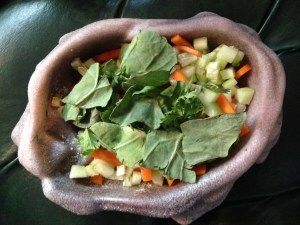
Plant matter such as fruits and vegetables can be easily found in most grocery stores.
The vegetables offered should consist of a large variety, including:
Staple Greens:
-
Dandelion Greens:
-
Mustard Greens:
-
Collards:
-
Watercress:
-
Escarole:Endive:
-
Turnip Greens
Staple Vegetables:
-
Butternut Squash:
-
Acorn Squash:
-
Yellow Squash:
-
Green Beans:
-
Parsnips:
-
Okra:
-
Snap Peas:
-
Sweet Potato:
The vegetables listed above should make up the largest portion of the plant matter mixture in the diet of your bearded dragon. All vegetables and fruit offered should be finely shopped to make it easier for the bearded dragon to eat.
Never offer any food item that is too large.
Bearded Dragon Care Sheet:
Occasional Greens:
-
Parsley:
-
Celery Leaves:
-
Cucumber (peeled):
-
Kale:
-
Kohlrabi Leaves:
-
Bok Choy:
-
Carrot Tops:
-
Swiss Chard:
-
Cilantro
The occasional greens listed above should be offered occasionally and in smaller portions than the staple greens. These can be mixed in with the staple greens and vegetables.
Some of these greens are high in oxalate and should be offered no more than once or twice per week in small amounts.
Occasional Vegetables
-
Carrots:
-
Asparagus:
-
Beets:
-
Bell Peppers:
-
Celery Stalks:
-
Pumpkin:
-
Zucchini:
-
Broccoli:
-
Cauliflower:
-
Green Peas
As with the occasional greens, the vegetables mentioned above should only be offered once or twice a week and mixed with staple greens and vegetables
There are some vegetables that should be offered rarely or avoided all together.
Bearded Dragon Care Sheet:
Vegetables Feed Rarely or Never
-
Spinach:
-
Beet Greens:
-
Lettuce:
-
Tomatoes:
-
Avocados:
Avocados, beet greens, and spinach contain high amounts of oxalates, which can be fatal in bearded dragons in high doses. It also is a calcium binding agent which can prevent the absorption of calcium. This can lead to issues such as Metabolic Bone Disease over time. Spinach and beet greens can be feed to your bearded dragon, but it should be only very seldom. Avocados should just be avoided since they are high in oxalates, plus high in fat and calories.
Lettuce contains very little nutritional value and should be avoided. The only time lettuce should be fed is if the bearded dragon becomes extremely dehydrated. A little lettuce can help with hydration issues, but too much can lead to diarrhea, further complicating dehydration. Chopped cucumber is a better option for hydration.
Bearded dragons can eat tomatoes, but in a very limited capacity. Tomatoes are very acidic and can cause issues if fed frequently. A little tomato every now and then is okay.
Rhubarb is very toxic to bearded dragons and should be avoided completely!
Bearded Dragon Care Sheet:
Staple Fruits:
-
Papaya:
-
Mango:
-
Prickly Pear:
Occasional Fruits:
-
Apples:
-
Strawberries:
-
Blueberries:
-
Raspberries:
-
Blackberries:
-
Banana:
-
Kiwi:
-
Watermelon:
-
Cantaloupe:
-
Grapes:
-
Honeydew Melon:
-
Peaches:
-
Pears
The plant matter portion of the diet should contain a finely chopped mixture of about 75% staple greens, 15% staple vegetables and staple fruits, with the other 10% consisting of occasional greens, vegetables, and fruits.
You do not need to use every vegetable, fruit, and insect mentioned in every feeding, but the staple and occasional foods should be rotated as much as possible to offer a varied diet. Varying the insect and plant matter items is very important for good, long-term health of your bearded dragon.
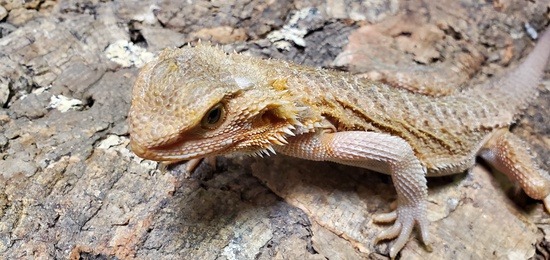
Bearded Dragon Care Sheet:
Diet Requirements of Baby Bearded Dragons:
Baby Bearded Dragons require a higher amount of proteins in order to build muscle, body mass, and develop fat reserves. This requirement means that babies need a larger percentage of insects than plant matter.
Babies will also need to be fed more frequently than older bearded dragons. It can be very common to feed a baby four or five times per day, and consume up to 70 – 80 pinhead crickets per day.
Baby bearded dragons (hatchling to 5 months old) should be fed approximately 60% – 80% insects and 20% – 40% plant matter.
So, if you feed your baby bearded dragon five times per day, make three feedings insect prey and two feedings half insects and half varied plant matter. During the plant matter feeding offer the vegetable/fruit mix before offering the insects.
Most bearded dragons will go after insects first and totally ignore the vegetables. You want to train your bearded dragon to like and eat plant matter at an early age.
Results will vary depending on the particular bearded dragon. Some take to vegetables very easily, some tend to deter from consuming them.

Bearded Dragon Care Sheet:
Diet Requirements of Juvenile Bearded Dragons:
Once your bearded dragon reaches the juvenile stage their diet needs change a bit. They should be developing good body mass and developing those fat reserves so the amount of insect prey can drop while the amount of plant matter should be increased.
Juvenile bearded dragons (5 months old to 18 months old) should be fed approximately 50% insect prey and 50% plant matter
The frequency of feedings may also decrease, but it can depend greatly from one bearded dragon to the next. Typically, a juvenile should be fed around three times per day.
If you feed your juvenile three times per day, offer half insects and half plant matter at each feeding, or just plant matter in the morning, just insects in the afternoon, and a mix of both plant matter and insects in the evening. These are just examples that can be altered to fit your schedule and needs.
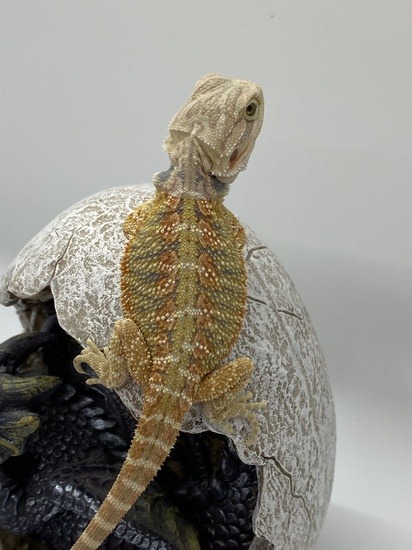
Bearded Dragon Care Sheet:
Diet Requirements of an Adult Bearded Dragon:
As your bearded dragon reaches maturity its diet requirements will change quite a bit from that of a baby – the opposite in fact. Now the adult needs far less insects and mostly varied plant matter.
Adult bearded dragons (over 18 months in age) require about 25% – 30% insect prey and about 70% – 75% plant matter in their diet.
The large amount of fruits and vegetables needed in an adults diet is why it’s so important to train them to like plant matter at an early age. If you wait until they are juveniles or adults to offer them vegetables and fruits it might be very difficult to break them of their insect addiction.
At this stage fruits and vegetables should be the most abundant offering in their diet. Insect prey should be offered much less. The frequency in needed offering will lessen as well. Many adult bearded dragons will only eat once or twice a day.
If you feed an adult twice per day (once in the morning then once in the evening) offer chopped vegetables and fruit in the morning, then another portion of plant matter with a few insects in the evening.
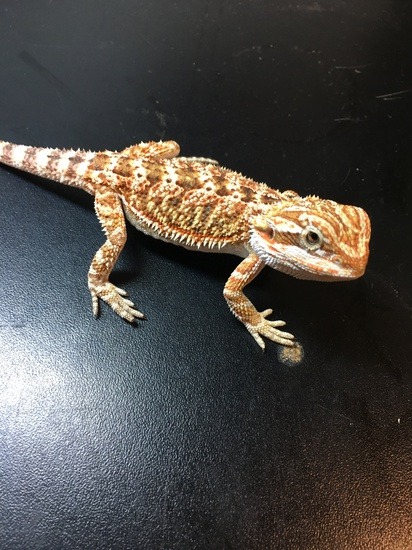
Bearded Dragon Care Sheet:
Feeding Insects:
Feeding insects to a bearded dragon is not very difficult, as the bearded dragon will usually readily go after this food item. There are some tips and tricks you can use while feeding crickets and other insects.
Feeder insects should be gut loaded for at least 24 hours before feeding them to your bearded dragon.
Gut loading is the process of feeding the feeder insects a highly nutritious meal before feeding them to your bearded dragon.
This is an optimal method for ensuring your bearded dragon receives the most nutritious foods possible.
Firstly, never feed your bearded dragon an insect that is too large.
Keep in mind that the feeder insect should not be larger than the space between the bearded dragon’s eyes. For babies that’s usually less than 1/4 of an inch.
Hand Feeding:
Since bearded dragons are typically very docile and friendly it is very easy to feed them by hand. Simply grab a cricket, roach, or horn worm and hold it in front of the bearded dragon. Once the bearded dragon notices the wiggly insect he will swipe at it with his tongue and munch away.
Grasp the insect firmly enough to keep hold of it, but not so tight as to kill it or keep the bearded dragon from being able to snatch it away. It may take you guys some practice to get the hang of it, but once the bearded dragon realizes you are feeding it will not take long.
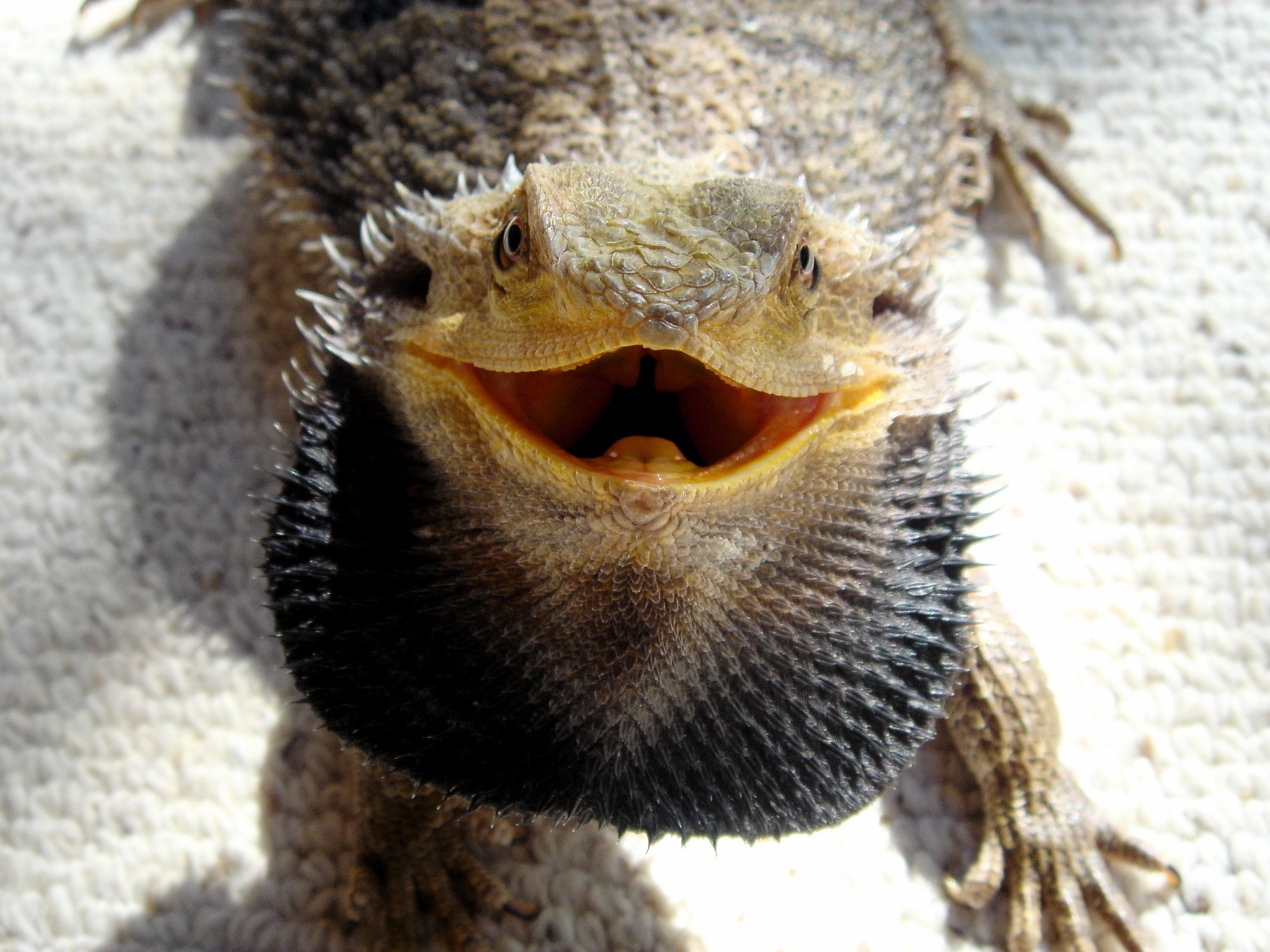
Bearded Dragon Care Sheet:
For very small insects you can use plastic feeding tongs to hold the food. Just make sure they are plastic. If you use metal tongs make sure to use plastic covers over the tips to prevent any injury to the bearded dragon.
You can simply hold out a small piece of fruit or vegetables for them to take from you. For baby bearded dragons you can hold a piece of fruit in the palm of your hand and watch as they climb into your hand to take it.
Hand feeding is a great way to bond with your bearded dragon and to tech him you are a friend.
Bowl Feeding:
If you are pinched for time and can’t hand feed, then placing the insect food into a suitable bowl is another option. You need to select a food bowl that adequately holds the insect prey while being shallow enough for the bearded dragon to be able to see the food and reach it.
There are specially made bowls just for feeding reptiles found at most pet stores. These bowls are super for offering different worms, such as meal worms and wax worms. You can use a store-bought feeder bowl that is very attractive, or use a simple plastic bowl that is suitable.
When feeding crickets, we prefer to use the Cricket Rock made by Exo Terra. The Cricket Rock is just as it sounds – a bowl with a lid, shaped like a rock used to offer crickets to the reptile.
Add how many ever crickets you plan to feed your bearded dragon in this particular feeding, close the lid, then set the Cricket Rock into the terrarium.

Bearded Dragon Care Sheet:
Pull out the special plug in the front of the Cricket Rock, and the crickets will begin coming out of the rock one at a time – ready to be snatched up by your bearded dragon.
Once your bearded dragon learns this Cricket Rock means it is dinner time, he will sit in front of it and wait for you to pull the plug. It’s great fun to watch!
Be sure to place any food bowls away from the direct heat of basking lamps. It’s best to place them on the opposite side of the basking area away from the high heat as much as possible.
Feeding Plant Matter:
Feeding your bearded dragon plant matter is pretty straight- forward. Make sure the fruits and vegetables are finely chopped and in small enough pieces so the bearded dragon can easily eat them. A small electric food chopper, or processor, works well.
Simply load the chopped plant matter into the bowl, sprinkle some calcium and vitamin supplement on top, and place into the terrarium.
You want to offer at least a half-cup of chopped veggie mix to a baby bearded dragon each day, 3/4 cup each to day a juvenile, and a cup to a cup and a half to an adult each day.

Bearded Dragon Care Sheet:
Again, you want to use a shallow bowl so the bearded dragon can see the food, and be able to reach it.
Also, be sure to vary the staple and occasional fruits and vegetables as much as possible to provide the most complete diet possible.
Vitamin and Mineral Supplements:
Even with a varied and complete diet, bearded dragons will still lack some nutrients in captivity that they normally get in the wild. That’s why it is very important to provide vitamin and mineral supplements when feeding your bearded dragon.
The most important supplements to provide are calcium with vitamin D3, and an general multivitamin. These supplements come in a powdered form engineered to stick to food items.
There are several to choose from, but we recommend Rep-Cal Calcium Powder with Vitamin D3 for calcium, and Rep-Cal Herptivite as a good multivitamin. There is also Repashy Calcium Plus which provides calcium, vitamin D3 and multivitamins all in one.
Bearded Dragon Care Sheet:
Insect feeders should be dusted and coated with a calcium/vitamin D3 supplement at each feeding. Veggie mixes should also be sprinkled with calcium/vitamin D3 at each feeding as well.
Multivitamins should be added to insect prey or veggie mixes at least one feeding per week.
Dusting insects, especially crickets, can be a challenge at times. Fortunately, there are some fantastic products available to make it a snap. There is a Cricket Dusting Cup available where you place a little supplement powder into the bottom, then add the insects. Screw the lid on firmly, then give the cup a shake. This thoroughly coats each insects with supplement powder and they’re ready to feed.

BThe Cricket Feeding Rock can also be used to dust insects. Simply sprinkle a little supplement powder in the bottom of the rock, add insects, replace lid, and give the rock a couple good shakes.
Viola! Your insects are thoroughly coated and ready for feeding.
Bearded Dragon Care Sheet:
Providing Your Bearded Dragon Fresh Water:
Although many bearded dragons will not drink directly from a bowl of water, you should provide a shallow bowl of water at all times. Bearded dragons cannot see standing water in a bowl and usually will not drink from it.
Clean, fresh water should still be offered because they can accidentally stumble in, and perhaps take a drink. You never want to leave any pet without water, even if they very seldom drink any.
The water offered should be fresh and, most important, dechlorinated. You can use bottled spring water, or tap water that has been treated with a dechlorinator. An excellent dechlorinator that’s made for reptiles is This will remove any chlorine, ammonia, and other substances that could harm your bearded dragon.
Misting Your Bearded Dragon:
Bearded dragons typically intake water in the wild by licking droplets of rain, or dew that roll off the end of their nose. To mimic this action you can fill a small misting bottle with fresh, dechlorinated water and gently mist your bearded dragon.
He may not like it at first, but after a couple seconds you will see him begin lapping up the droplets of water off the end of his nose.
You will want to mist your bearded dragon for a few minutes at least two to three times per day.
Bathing Your Bearded Dragon:
Bearded dragons love getting baths, and you should give yours a bath at least once a week. Let the bearded dragon soak in warm water for about fifteen to twenty minutes. Use a small cup to scoop water and slowly pour over his body. Avoid getting any water in their eyes, mouth, or nose.
Make sure the water is not so deep that the bearded dragon could drown. A sink works well for a baby or juvenile, while a tub will with about an inch
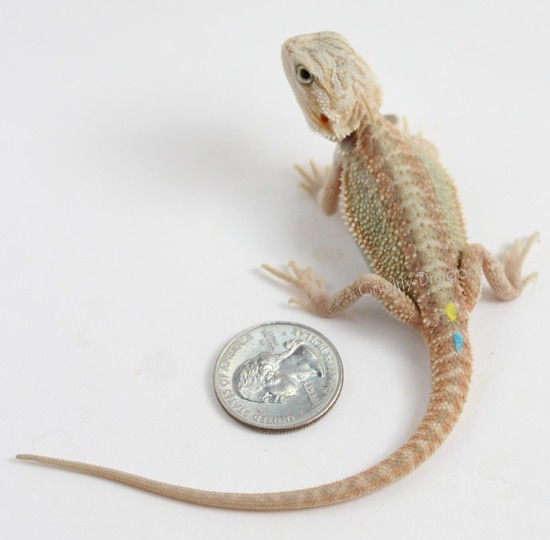
Bearded Dragon Care Sheet:
and a half of warm water works well for adults (depending on its size). The bearded dragon will typically splash and play around in the water taking care of most of the bathing himself.
Frequent bathing will help provide good hygiene and keep your bearded dragon well hydrated. Be sure to monitor your bearded dragon the entire time to prevent any accidental drownings.
We have covered a lot on the diet and nutrition aspects of keeping bearded dragons, now let’s go over some example feeding schedules for your bearded dragon.
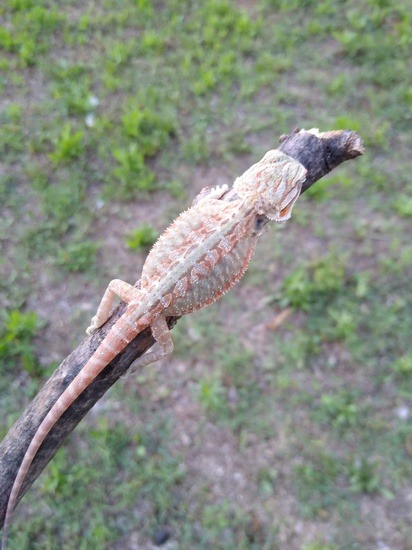
Bearded Dragon Care Sheet:
Example Feeding Schedules:
It is very important to establish a routine feeding schedule for your bearded dragon – and yourself. This will help to train your bearded dragon to know when it’s feeding time, and help to get you into the routine of daily multiple feedings.
It’s best to begin establishing feeding routines as soon as you get your bearded dragon, so let’s begin with babies below.
Bearded Dragon Care Sheet:
Example Feeding Schedule for Baby Bearded Dragons.
On Mondays, Wednesdays and Fridays:
7:00am
★ Offer 20 – 30 pinhead crickets dusted with calcium supplement ★ Clean water bowl and replace with fresh, dechlorinated water ★ Check terrarium for any feces and unconsumed food items as needed
Noon
★ Offer 5 – 10 small dubia roaches dusted with calcium supplement ★ Check water bowl for any feces. Clean and replace with fresh,
dechlorinated water, if needed
3:00pm
★ Offer 10 – 15 pinhead crickets dusted with calcium supplement ★ Check water bowl for any feces. Clean and replace with fresh,
dechlorinated water, if needed
6:00pm
★ First offer a 1/2 cup of chopped veggie mix sprinkled with calcium
supplement ★ Once the veggie mix is eaten, offer a couple wax worms (or butter
worms, small horn worms, Phoenix worms) with calcium supplement ★ Check water bowl for any feces. Clean and replace with fresh,
dechlorinated water, if needed
Late Evening
★ Check terrarium for any feces and unconsumed food items as needed
Bearded Dragon Care Sheet:
On Tuesdays, Thursdays and Saturdays:
7:00am
★ Offer 10 – 15 small dubia roaches dusted with calcium supplement ★ Clean water bowl and replace with fresh, dechlorinated water ★ Check terrarium for any feces and unconsumed food items as needed
Noon
★ Offer 3 – 4 horn worms dusted with calcium supplement ★ Check water bowl for any feces. Clean and replace with fresh,
dechlorinated water, if needed
3:00pm
★ Offer 15 – 20 pinhead crickets dusted with calcium supplement ★ Check water bowl for any feces. Clean and replace with fresh,
dechlorinated water, if needed
6:00pm
★ First offer a 1/2 cup of chopped staple vegetables and fruit mixed with a little occasional vegetables and fruit sprinkled with calcium supplement ★ Once the veggie mix is eaten, offer a couple wax worms (or butter
worms, small horn worms, Phoenix worms) ★ Check water bowl for any feces. Clean and replace with fresh,
dechlorinated water, if needed
Late Evening
★ Check terrarium for any feces and unconsumed food items as needed
On Sundays:
★ Sunday can be a free-for-all day where you mix and match the above
examples. You could offer veggie first thing in the morning, or in the middle of the day. It’s up to you!
★ Check terrarium for any feces and unconsumed food items as needed ★ Check water bowl for any feces. Clean and replace with fresh,
dechlorinated water, if needed ★ Sprinkle one feeding with multivitamin supplement instead of calcium
Bearded Dragon Care Sheet:
Example Feeding Schedule for Juvenile Bearded Dragons:
On Mondays, Wednesdays and Fridays:
7:00am
★ Offer a 1/2 cup of chopped veggie mix sprinkled with calcium supplement ★ Clean water bowl and replace with fresh, dechlorinated water ★ Check terrarium for any feces and unconsumed food items as needed
Noon
★ Offer 5 – 10 small small dubia roaches, or 3 – 4 horn worms, dusted with
calcium supplement ★ Check water bowl for any feces. Clean and replace with fresh,
dechlorinated water, if needed
6:00pm
★ First offer a 1/4 cup of chopped veggie mix sprinkled with calcium
supplement ★ Once the veggie mix is eaten, offer a couple wax worms (or butter
worms, small horn worms, Phoenix worms) with calcium supplement ★ Check water bowl for any feces. Clean and replace with fresh,
dechlorinated water, if needed
Late Evening
★ Check terrarium for any feces and unconsumed food items as needed
On Tuesdays, Thursdays and Saturdays:
7:00am
★ Offer 10 – 15 small dubia roaches dusted with calcium supplement ★ Clean water bowl and replace with fresh, dechlorinated water ★ Check terrarium for any feces and unconsumed food items as needed
Noon
★ Offer 3 – 4 horn worms, 5 – 10 appropriately-sized crickets dusted with
calcium supplement ★ Check water bowl for any feces. Clean and replace with fresh,
dechlorinated water, if needed
6:00pm
★ First offer a 3/4 cup of chopped veggie mix sprinkled with calcium
supplement ★ Once the veggie mix is eaten, offer a couple wax worms (or butter
worms, small horn worms, Phoenix worms) ★ Check water bowl for any feces. Clean and replace with fresh,
dechlorinated water, if needed
Late Evening
★ Check terrarium for any feces and unconsumed food items as needed
On Sundays:
★ Sunday can be a free-for-all day where you mix and match the above
examples. You could offer veggie first thing in the morning, or in the middle of the day. It’s up to you! ★ Check terrarium for any feces and unconsumed food items as needed ★ Check water bowl for any feces. Clean and replace with fresh,
dechlorinated water, if needed ★ Sprinkle one feeding with multivitamin supplement instead of calcium
Bearded Dragon Care Sheet:
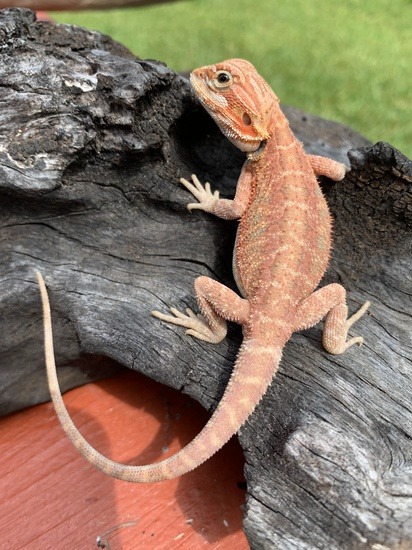
Bearded Dragon Care Sheet:
Example Feeding Schedule for Adult Bearded Dragons:
On Mondays, Wednesdays and Fridays:
7:00am
★ Offer a 1 cup of chopped veggie mix sprinkled with calcium supplement ★ Clean water bowl and replace with fresh, dechlorinated water ★ Check terrarium for any feces and unconsumed food items as needed
Noon
★ Offer 3 -5 appropriately-sized dubia roaches, or 2 – 3 horn worms, dusted
with calcium supplement ★ Check water bowl for any feces. Clean and replace with fresh,
dechlorinated water, if needed
6:00pm
★ First offer a 1/2 cup – 1 cup of chopped veggie mix sprinkled with calcium
supplement ★ Once the veggie mix is eaten, offer 5 – 15 appropriately-sized crickets
dusted with calcium supplement ★ Check water bowl for any feces. Clean and replace with fresh,
dechlorinated water, if needed
Late Evening
★ Check terrarium for any feces and unconsumed food items as needed
On Tuesdays, Thursdays and Saturdays:
7:00am
★ Offer 3 -5 appropriately-sized dubia roaches, or 2 – 3 horn worms, dusted
with calcium supplement ★ Clean water bowl and replace with fresh, dechlorinated water ★ Check terrarium for any feces and unconsumed food items as needed
Noon
★ Offer a 1 cup of chopped veggie mix sprinkled with calcium supplement ★ Check water bowl for any feces. Clean and replace with fresh,
dechlorinated water, if needed
6:00pm
★ First offer a 1/2 cup – 1 cup of chopped veggie mix sprinkled with calcium
supplement ★ Once the veggie mix is eaten, offer 5 – 15 appropriately-sized crickets
dusted with calcium supplement ★ Check water bowl for any feces. Clean and replace with fresh,
dechlorinated water, if needed
Late Evening
★ Check terrarium for any feces and unconsumed food items as needed
On Sundays:
★ Sunday can be a free-for-all day where you mix and match the above
examples. You could offer veggie first thing in the morning, or in the middle of the day. It’s up to you! ★ Treat foods, such as butter worms, wax worms and Phoenix worms, can
be offered a couple times throughout the day ★ Check terrarium for any feces and unconsumed food items as needed ★ Check water bowl for any feces. Clean and replace with fresh,
dechlorinated water, if needed ★ Sprinkle one feeding with multivitamin supplement instead of calcium
These feeding schedules are just a guide to show you an example feeding schedule. You do not have to follow them to the letter. Feel free to modify them to fit your lifestyle and particular needs.
Bearded Dragon Care Sheet:
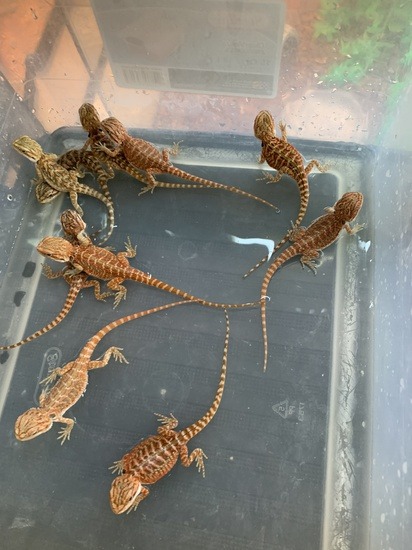
Common Health Issues With Bearded Dragons:
Bearded dragons are very robust reptiles, but they can develop some issues when kept in captivity. Most problems tend to stem from either improper diet, inadequate full-spectrum lighting, or temperatures that are too high or too low.
Bearded Dragon Care Sheet:
Here are a few of the most common health issues found in captive bearded dragons and some ways to help prevent them.
Bearded Dragon Care Sheet:
Impaction:
Impaction is one of the leading causes of death in captive bearded dragons. This is caused by a blockage inside the digestive tract caused by the animal swallowing objects which it cannot pass.
Usually impaction comes from small particle substrates (such as Playground sand, crushed walnut shells, or calcium sand) which the bearded dragon accidentally swallows when going after an insect.
Once a bearded dragon begins to show signs of impaction, it’s too late. If caught early, the bearded dragon might be able to be saved, but it’s a painful and costly endeavor. Unfortunately, most cases of impaction lead to death.
The best way to reduce the risk of impaction is to remove any small particle substrate and use reptile carpet liners, newspaper, or ceramic tiles as substrate. It is never recommended to use small, loose particle substrate with baby bearded dragons.
Bearded Dragon Care Sheet:
Metabolic Bone Disease:
Metabolic Bone Disease is a very debilitating disease that is also very common with captive bearded dragons. This disease is a breakdown of the skeleton system due to the lack of calcium absorption in the bones. This is generally due to a lack of calcium intake, or from inadequate UVB exposure.
UVB rays from the sun help a bearded dragon to produce vitamin D3, which promotes calcium absorption. Without vitamin D3 the bearded dragon’s bones will not absorb calcium, which in turn causes the bones to become weak and brittle.
Always provide adequate full-spectrum lighting at the proper placement, and supplement the diet with calcium powder containing vitamin D3. If you suspect your bearded dragon may be showing signs of MBD get it to a veterinarian immediately for treatment.
Bearded Dragon Care Sheet:
Mouth Rot:
Mouth rot is a bacterial infection usually caused by low temperatures and unclean living conditions. The symptoms are dark coloration on the lips, gums, or tongue. The illness will get worse as time goes on causing the gums to bleed and teeth to eventually fall out.
Always keep the enclosure clean and sanitized. Remove any feces or uneaten food items from the enclosure as soon as it’s found. Be sure the temperatures within the enclosure are correct for your age bearded dragon.
If your bearded dragon begins showing signs of dark colorations around the mouth seek a veterinarian immediately.
Bearded Dragon Care Sheet:
Acts Lazy or Lethargic:
If your bearded dragon begins acting lazy or becomes lethargic it could be a sign that the temperatures are too low or too high.
Monitor the temperatures throughout the enclosure and adjust as needed. This could also be a sign of brumation, if it is during the fall and winter months.
Bearded Dragons naturally want to through brumation, or hibernate, during this time of year once they reach the juvenile stage. This is very common and natural.
Bearded Dragon Care Sheet:
Diarrhea or Runny Stool:
Diarrhea or runny stool can be caused by several things. This could be a parasite, or from an inadequate diet. Feeding a bearded dragon lettuce frequently can cause diarrhea. Change the diet to more nutritious fruits and vegetables.
If the problem persists after a diet change seek a veterinarian.
Bearded Dragon Care Sheet:
Loss of Appetite:
Loss of appetite can happen if the conditions in the enclosure are not suitable. Usually this is due to temperatures that are too low, or temperatures that are too high. Too much stress can also cause the bearded dragon to not eat, and spend a lot of time hiding.
Most of the time it is temperatures that are too low. Monitor the temperatures throughout the enclosure and adjust them to the correct parameters according to the bearded dragon’s age.
Loss of appetite could also be due to a lack of UVA exposure. UVA radiation helps to encourage a healthy appetite. Make sure you are using a good full-spectrum light and the placement of the light is within 12 inches of the bearded dragon at all times.
You may need to replace the fluorescent tube if it is older than six months. These bulbs can weaken in strength over time.
It is important to use the best husbandry practices you can to help prevent these conditions. Provide nutritious food items and add calcium and multivitamin supplements at each feeding. Be sure to always use high- quality full-spectrum lighting and heating elements.
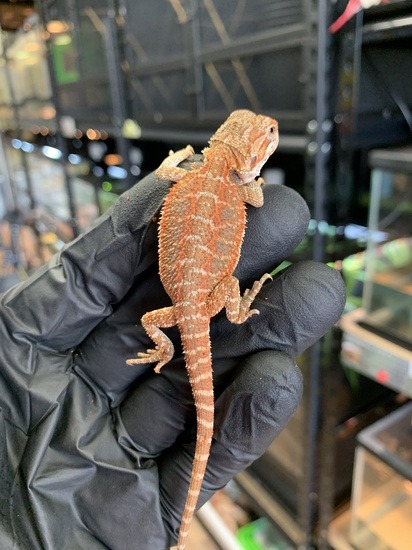
Bearded Dragon Care Sheet:
Acquiring Your First Bearded Dragon:
We have covered quite a bit of information on bearded dragon care. As you can see it’s not very difficult to keep a bearded dragon as a pet, but there’s a lot of things to know beforehand.
If you have never owned a bearded dragon, but are interested in adding one to your household there are a few important things to consider. Let’s touch on those things now to help you decide whether bearded dragon ownership is right for you.
Costs:
Bearded dragons are really very simple to take care of – just supply an appropriate habitat, feed them the right foods, keep them and their home clean, and interact with them as much as possible. That’s really it in a nutshell!
But there are some costs to keeping them healthy and happy. First, you will need a habitat. These can range anywhere from free to several hundred dollars, depending on how elaborate a setup you want (and your budget, of course).
The typical commercially-purchased habitat sized for an adult will run around $100 – $200. You also have the option to build an enclosure yourself, check out craiglist, or your local newspaper for used enclosures.
Heating and lighting elements and everything needed to house them will generally cost around $50 – $100. Again, it depends on what elements you choose to use. Substrate and decor items can cost around $30 – $40. You can use items from outdoors, but make sure you sanitize them thoroughly before using (we discuss sanitation in the Housing Requirements section earlier).
The good thing is these larger expenses are usually one-time costs. You only need to buy them once if you purchased the appropriate items from the beginning. You will need to replace lighting elements yearly at a minimum.
The costs of buying and preparing food items is an on-going expense. You will need to constantly supply food and water for your bearded dragon. The good news is that insect prey and the staple fruits and vegetables are relatively inexpensive. You may spend about $10 – $20 per week on food at the most.
Overall, bearded dragons are not too expensive to keep. The most expensive being the initial set-up costs and any veterinarian fees. After that it only takes a few dollars per week.
Bearded Dragon Care Sheet:
Time:
Time is truly the biggest consideration to take in when deciding to acquire a bearded dragon. If you live a very hectic, fast-paced job, then maybe a bearded dragon isn’t a good idea. If you travel a lot for work then a bearded dragon might not be a good idea.
You can leave them for several hours, or even a day (at most) they do need attention at minimum a couple times per day. They do not require constant monitoring, and can be left alone during a normal work shift day, but leaving them for more than a day is asking for disaster.
You need to be able to devote at least, bare minimum, an hour or two each day to properly maintain them. It doesn’t need to be an hour block of time, but an hour out of the day total. Taking 15 minutes in the morning, maybe 15 minutes in the afternoon, and 30 minutes in the evening is usually plenty enough time to suffice.
You will need more time on certain days when their habitat needs cleaning, or when giving them a bath.
Just realize these pets are not “get them and forget them” types of pets and do need some attention each day. Have it set in your heart to have these pets. Ask yourself, “Do I really want to invest the time and effort it takes to love these beautiful animals?”. If the answer is not a resounding “YES!”, then please do not go any further. If the answer is a resounding “YES!”, then welcome to the world of bearded dragons!
Bearded Dragon Care Sheet:
Space:
Although bearded dragons do not get very large, they do require some space in order to thrive. They need an enclosure that will comfortably house them, and these can take up quite a bit of room in your house. You need an area that is about six feet long and approximately three feet wide in order to house the enclosure and stand (if used). Of course, the space needed will greatly depend on the size of the enclosure.
Just keep in mind the size enclosure you plan on using, and plan on where you will place it. Have all this worked out before you bring your bearded dragon home.
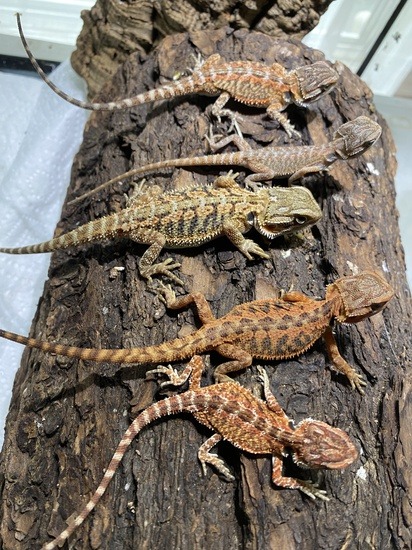
Taking The Next Step:
Once you have thought about everything just mentioned, you are ready for your bearded dragon…. well, not just yet. Have everything needed to properly take care of it before ever setting foot into the pet store.
You want to have the enclosure all set up with heating elements, basking lights, UVB lights, substrate, decor, food and water bowls, etc. Have the habitat completely running and functional first. Verify everything is operating as it should before introducing your pet.
Make sure the basking area and cooler zones are at the correct temperatures and the bulb placements are good. Be sure the basking perch is adequate and stable. Have the substrate added and any decor items are in place.
You want to have the entire habitat operating and completely functional at least a week before introducing the bearded dragon. This is done so you can spot any potential problems, or inadequacies well before the bearded dragon comes so you have time to correct them.
Bringing your Bearded Dragon home!
When you bring your new bearded dragon home for the first time it will be very stressed out due to the movement and uncertainty. Imagine being yanked out of your home and being place in a strange location. Imagine how frightening that is! Now, imagine how the bearded dragon feels.
That’s why it is important to have everything functional before bringing your new family member home. This helps him feel more secure and reduces overall stress, and decreases the time it takes for him to settle in. You do not want to introduce the bearded dragon to its new home, them have to keep moving and shuffling things to adjust.
Set up the environment and do the adjusting before bringing him home.
You also want to have food and fresh, dechlorinated water available when the bearded dragon comes home. Already have the crickets, roaches, horn worms, veggie mixes, and whatever else you will provide for food all ready to go.
Bearded Dragon Care Sheet Conclusion:
You are now ready to be the proud papa or mama of a bearded dragon!
Of course, this bearded dragon care sheet is not the end-all, be-all of their husbandry, but hopefully you can come away with a little better understanding of introducing these amazing animals into your life.
We hope you found this care sheet informative and helpful, and we hope you come back to A 2 Z Reptiles any time you have any comments or questions. Like and share this article for more people to learn how to care for bearded dragons!
Bearded Dragon Care Sheet:
Thank you!
Bearded Dragon Care Sheet:
Check out a lot of the bearded dragons featured here on MorphMarket!
Want to Support our efforts? Donate! fan funding is our main source of income! Thank you!
Become a Patron!
 Buy me a coffee
Buy me a coffee

Support Our Breeding operation Click Here For Our Go Fund Me!
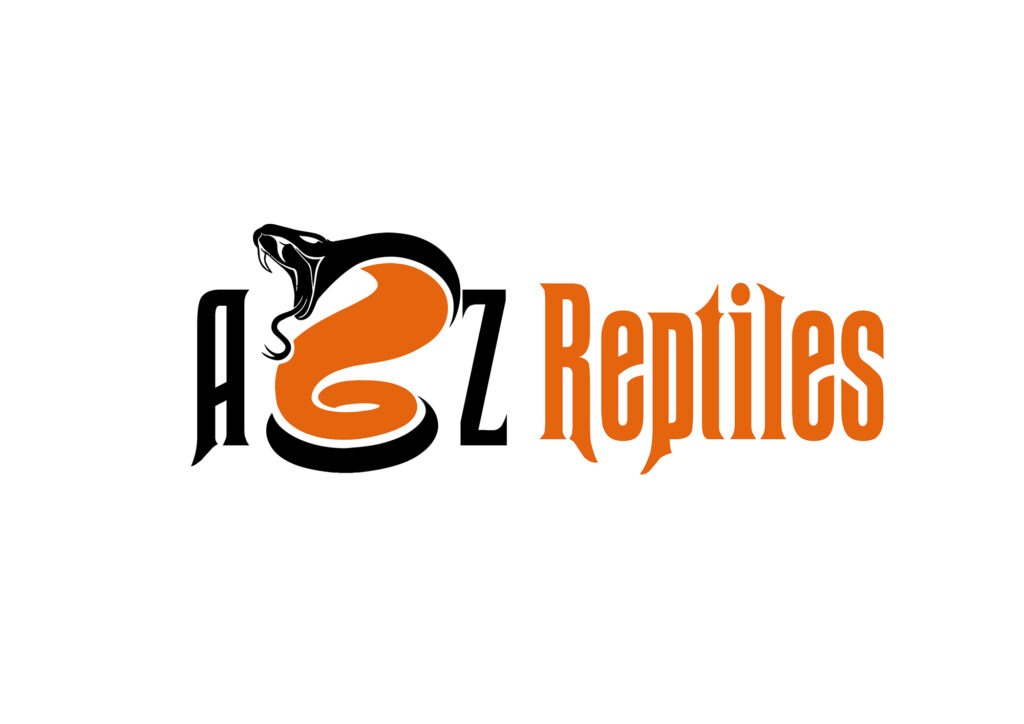

This is the link to click for a reptile or a frog! Check out this article! Click Here!
Get A Baby Tortoise! Check out This article! Click Here!
Ball Python Care Guide CLICK HERE!
Ball Python Habitat Guide!
Bearded Dragon Care Sheet!
Blue-tongue Skink CARE SHEET!
CARE SHEET FOR RED-TAIL BOA!
Reticulated Python Care Sheet!
Savannah Monitor Care Sheet!
Glass Cages!
Animal Plastics!
Custom Cages!
ARS Caging!
Custom Reptile Habitats!